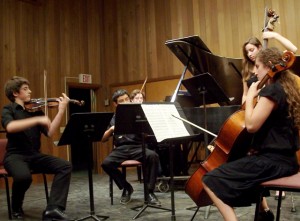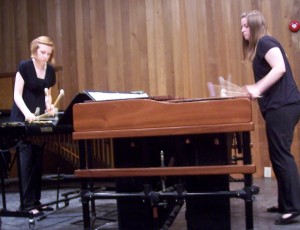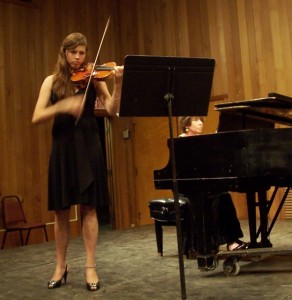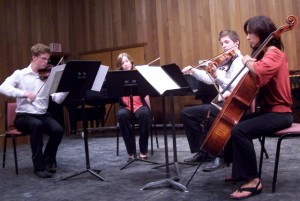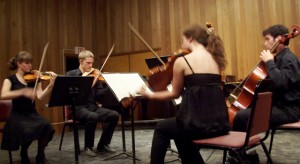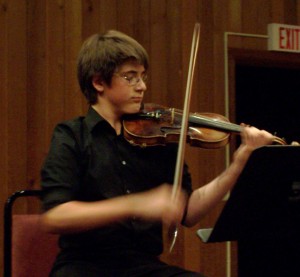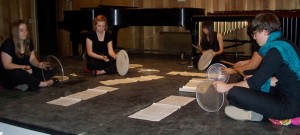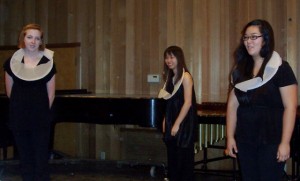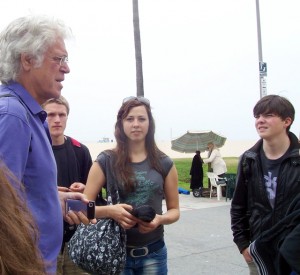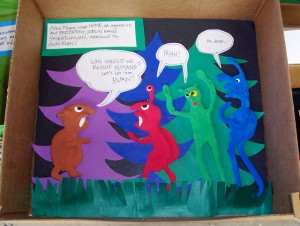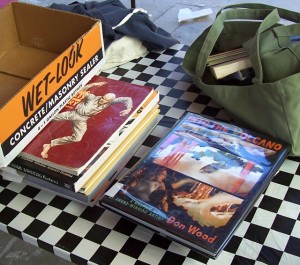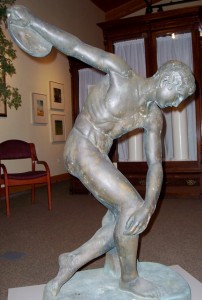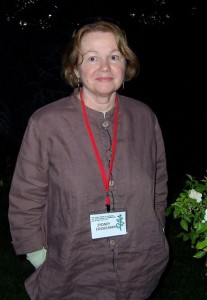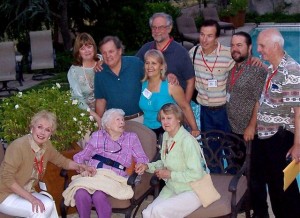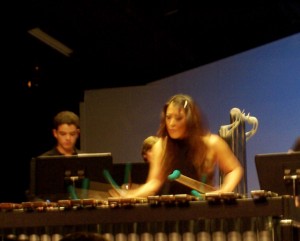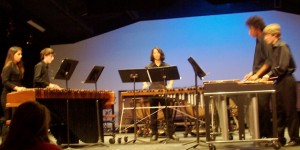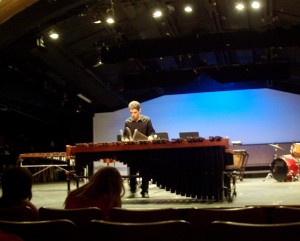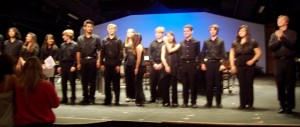From Caracas to Idyllwild
September 30, 2010By Marcia E. Gawecki
It’s not unusual for Idyllwild Arts Academy to attract music students from all over the world. Last year alone, they came from China, Korea, Singapore, Taiwan, Canada, Costa Rica, Bulgaria, Venezuela and Germany. Yet, only one auditioned for the school via You Tube from the mountains of Caracas, and has studied with the LA Philharmonic’s hot new conductor, Gustavo Dudamel.
William, a flute player at Idyllwild Arts, is tall, modest, and could be a dead ringer for President Barak Obama. His English has improved greatly since his audition from the mountaintop a year ago. And, as a postgraduate senior, he stands a good chance of getting into college.
His whirlwind journey began when Peter Askim, Idyllwid Arts Music Director and Composer-in-Residence, contacted one of his friends from the Venezuela Philharmonic, William said, and asked her to find him a flute player. However, William was up in the mountains when he got the call.
“I was 10 hours from Caracas,” William said. “There was no way that I could make a demo tape and send it.”
So he missed the deadline, but they called him again.
“So my friend videotaped me playing, and I posted it on You Tube,” William said.
When the school e-mailed him that he was accepted, William’s mother (who didn’t speak or read English) was skeptical.
“She wasn’t going to send me halfway around the world based on an e-mail message,” he said. “She thought I was going to be abducted.”
So Marek Pramuka, Dean of Admission and Financial Aid at Idyllwild Arts, asked Georgina, a music student from Costa Rica, to talk to his mother in Spanish, William said.
“She told her all about the school, and the orchestra, and she convinced my mom that it was OK for me to come to America,” he said.
Although William was accepted on a full-ride scholarship, the logistics of getting to Idyllwild was challenging.
“First, we had to transfer bolivars (Bolivar fuerte currency) into dollars,” William explained. “But we couldn’t do that at the bank, so we had to rely on street venders.”
Then he had to get a passport and visa to leave the country. Since his mother doesn’t have a car, they relied on public transportation and a family friend to take them to the various places.
“Although gas is cheap in Venezuela, cars are expensive,” William explained. “Gas is about 25 cents a gallon, but a car that costs about $25,000 in the US, would cost nearly double in Venezuela.”
He lives with his mother (who is studying to be a nurse) and uncle in a tough neighborhood. His father remarried, and William worries that his younger stepbrother will get into trouble with gangs. According to various web sites, 30 percent of Venezuelans live on less than $2 US dollars a day.
“William is a product of ‘El Sistema,'” said one of the Idyllwild Arts patrons while talking about scholarship recipients during the Jazz in the Pines concert this year. “It’s an excellent model of how to keep young at-risk kids interested in music. They give them instruments and keep them so busy that they’re not tempted to join gangs or get into trouble.”
According to various web sites, the State Foundation for the National System of Youth and Children’s Orchestras of Venezuela, commonly known as ‘El Sistema,’ is a government-funded organization, founded by maestro José Antonio Abreu, aimed at music education through symphony orchestras and choruses. A link to ‘El Sistema’ is listed under “Fesnojiv” in Gustavo Dudamel’s personal web site.
William said that his orchestra rehearsals began right after school, and lasted for hours. They also kept them occupied during summer vacations.
“I was glad that I was part of the orchestra,” William said. “I had somewhere to go after school.”
He chose the flute because he’s always been attracted to the sound. And, although female flutists are common in the US, male flutists are more common in South America, he said.
The Simon Bolivar Youth Orchestra was a great training ground and that’s where he worked with LA Philharmonic’s conductor, Gustavo Dudamel. But he didn’t say much about him.
“Maybe he’s sick of talking about it,” said Kitty’s mom at The Redlands Bowl. William and Kitty, a fellow Idyllwild Arts music student, won $500 scholarships and were asked to perform before a live audience in June.
“All of LA is talking about Gustavo Dudamel,” Kitty’s mom said. “He’s LA Philharmonic’s hand-picked darling. Of course, the New York Philharmonic thinks he’s too young and inexperienced, but we don’t think so.”
William and Kitty talked about the other performers that evening, including a violin player who couldn’t be more than 10 years old.
“We hate to follow her in the program,” William said. “How can you compete with that cuteness?”
The night before, William had been to the Redlands Bowl for a practice run and sound check with his flute teacher, Sara Andon, and his piano accompanist, Lara Urrutia.
“Lara’s great,” William said. “She keeps up with me. Other accompanists I’ve played with fall behind, and I end up following them.”
They discussed the amphitheater’s acoustics and what to wear for the performance. Since William was playing excerpts from Bizet’s French Opera, “Carmen,” they decided to wear red.
However, William was concerned about playing in an open-air ampitheater, something that wasn’t made clear to him.
“When you play a wind instrument, you already are maxing out your lung capacity,” he said. “Now I have to project even more so that the audience can hear me. I just hope that the wind is not blowing at me, but away.”
William’s selections from “Carmen” was a crowd pleaser at The Redlands Bowl. Kitty played two contemporary pieces, “Prelude,” and “Alternating Currents,” but wasn’t as happy with her performance. Kitty, who attended Idyllwild Arts all four years, now attends Rice University on a full music scholarship.
When William applied for the Redlands Bowl scholarship, he had to save up for the $50 entry fee.
“At school, you get $20 a week allowance, so I had to save up for three weeks,” he said.
In fact, 68 percent of the 250 students who attend Idyllwild Arts receive some sort of scholarship money, states The Boarding School Review.
When William told his grandmother about the competition, she was certain that he was going to win.
“She said, ‘You’re going to win,'” William said. “Even when I told her how many people tried out. But she’s always believed in me.”
Another person who has believed in William is Askim, who brought him here from Caracas. William said that he didn’t see Askim for two weeks after he arrived. Then when he was in the orchestra, he was annoyed by his name.
“You see, there are two Williams in our orchestra, me and a clarinet player who sits right behind me,” William said. “Whenever Peter would shout, ‘William,’ we both would answer. So he tried calling us ‘William No. 1’ and ‘William No. 2,’ but we both wanted to be ‘William No. 1.”
So Askim nicknamed William the flute player, “Baldy” and William the clarinet player, “Hairy,” for his spiked hairdo.
Hear “Baldy” playing the role of the bird during the Idyllwild Arts Academy Orchestra’s performance of Prokofiev’s “Peter and the Wolf” on Oct. 16 and 17. The show will also feature guest narrator, Harry Shearer, from “The Simpsons” fame. The show is free and open to the public and will be held in the Bowman Arts Building. For more information, visit www.idywildarts.org.










